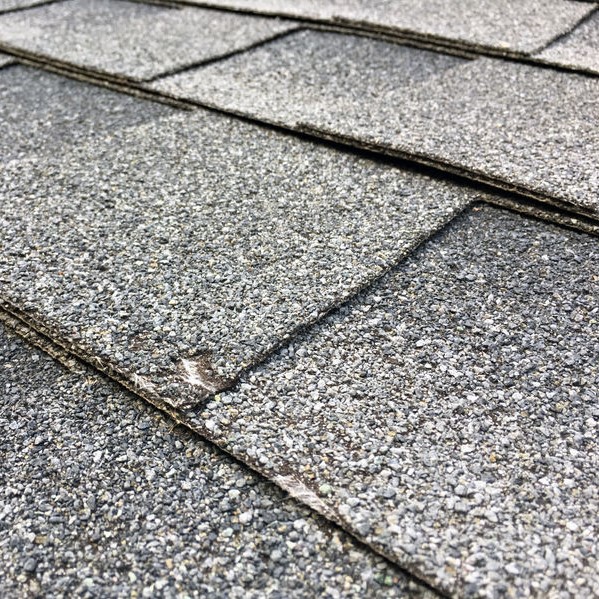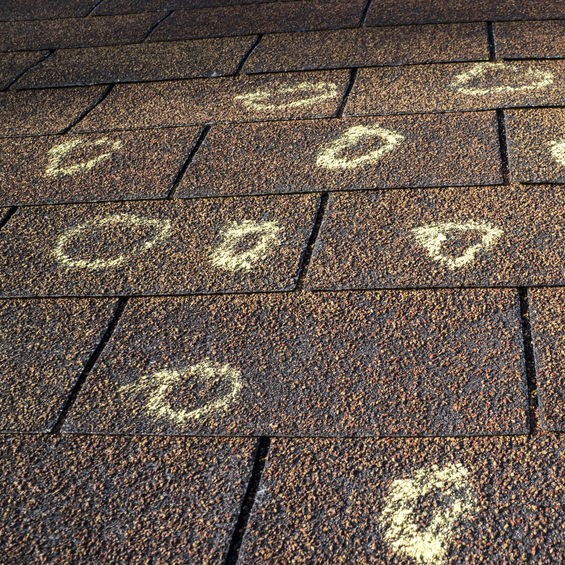
What is hail damage on a roof?
There is nothing like sleeping through a mild thunderstorm for most of us in Texas. After a hot summer or early fall day, as the sun sets and a “cool” front comes through, one of our Lone Star State storms builds up and BOOM! We got lightening, thunder, rain, and hail damage rooftops.
Yeah, that’s the downside to those days and nights here, hail and roof damage, they go hand in hand. When we hear hail on roof while its raining, we’re sitting in our homes wondering what’s kind of hail damage roof we’re going to have waiting on us.
Hail is what many call Mother Nature throwing rocks at our homes and vehicles. It is a powerful force that even the most minor hailstorm can damage a roof so subtle, you don’t realize the significant damage it left behind…. Until you have a roof leak later.
Does Hail always damage a roof?
Yes, every hailstorm has left some mark on your roof, albeit a small mark, you can be certain there is damage. Every time it hails, those hail stones will knock asphalt granules off your roof. Will you see it from the ground? No, but hail damage roofs aren’t always visible from the ground.
This is why it is always recommended to have a professional roofing contractor inspect your roof after a hailstorm. They know hail damage rooftops and whether it is something that needs immediate attention.
What does hail damage look like on shingles?
Hail damage roof with asphalt shingles will leave damage such as these behind:
- You see areas of missing granules, exposing the roof felt or membrane
- Dented shingles
- Bruised, fractured shingles
- Shiny asphalt shingles
- Broken, cracked, dimpled, punctured
- Curled shingles
- Loose shingles flapping in the wind
- Algae, mold, or moss growing on the shingles
What size hail does it take to damage a roof?
Hail damage roofs can be caused by hail stones that are smaller one inch, and the bigger the hail stone, the bigger the hail damage rooftops in the area. If your neighbor has a hail damage roof, you can almost be 100% sure you have a hail damage roof too. Examples of what size of a stone hail damage roof can happen are:
- ¾” hailstone: This is the smallest size hailstone measured and when there are strong winds blowing with this size of hailstone, it can damage metal fascia, painted decks, vinyl siding, and window screens. There will be dislodge granules in the gutters and downspouts, which may be dented too. This size of hailstone causes damage so small, typically, it takes an experienced and trained eye will see the damage.
- 1” hailstones: Hailstones at this size will bruise asphalt shingles and the underlayment, with or without strong winds, this hailstone size can damage fascia, gutters, and siding. If the wind is strong, the damage could be worse
- 1¼” hailstones: This ¼” increase will leave behind more severe and significant damage. Your property may have exposed areas that look somewhat like swiss cheese after hailstones of this size, with or without wind.
- 1½” hailstones: At this size, significant hail damage, roofs and surrounding property, depending on the amount, the length of time it falls, and the wind, it can be severe.
- 1¾ – 2” hailstones: At this size of hail, damage rooftops can be penetrations in the softer areas from previous hailstorms and age of roof. Areas where ridge caps, plastic roof vents are especially vulnerable. Hailstones this size, combined with wind, can tear siding off, crack windows and damage metal fixtures.
- 2” hailstones: Hailstones of this size and bigger will leave behind severe and significant damage. It isn’t a matter of “if” but “how much and where”. At this point, calling your insurance company and a roofing contractor is recommended.

What do insurance adjusters look for on roofs?
When you file a hail roof claim, insurance adjusters have a check list of what they look for, and most of them stay on that check list. This is why it is recommended to have a roofing contractor there at the same time to do the inspection with the adjuster. A contractor wants your business, they will guide the adjuster along the way, pointing out things they may have otherwise looked past.
- Mostly what insurance adjusters look for in general is:
- Age of the roof
- Proper installation
- Broken or missing shingles
- Sun damage,
- Tree damage
- Missing or raised nails
- Signs of long exposure (aka owner neglect)
On Hail Damage Roof Claims
As soon as you realize you have hail damage, you need to advise your insurance company immediately. Then contact a roofing contractor. If you don’t have one, do an internet search for “hail damage roof repair near me” and call several, getting quotes from each. Ask about their warranty, references for recent and current jobs, certification, insurance, etc. Need help with your roof insurance claim process and repair? Call 214-373-1500 today.
